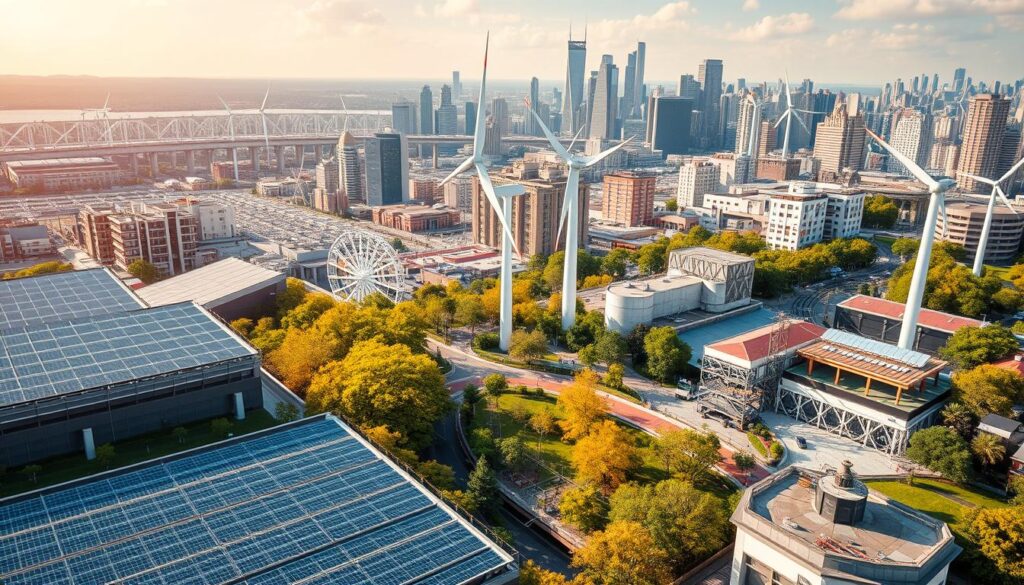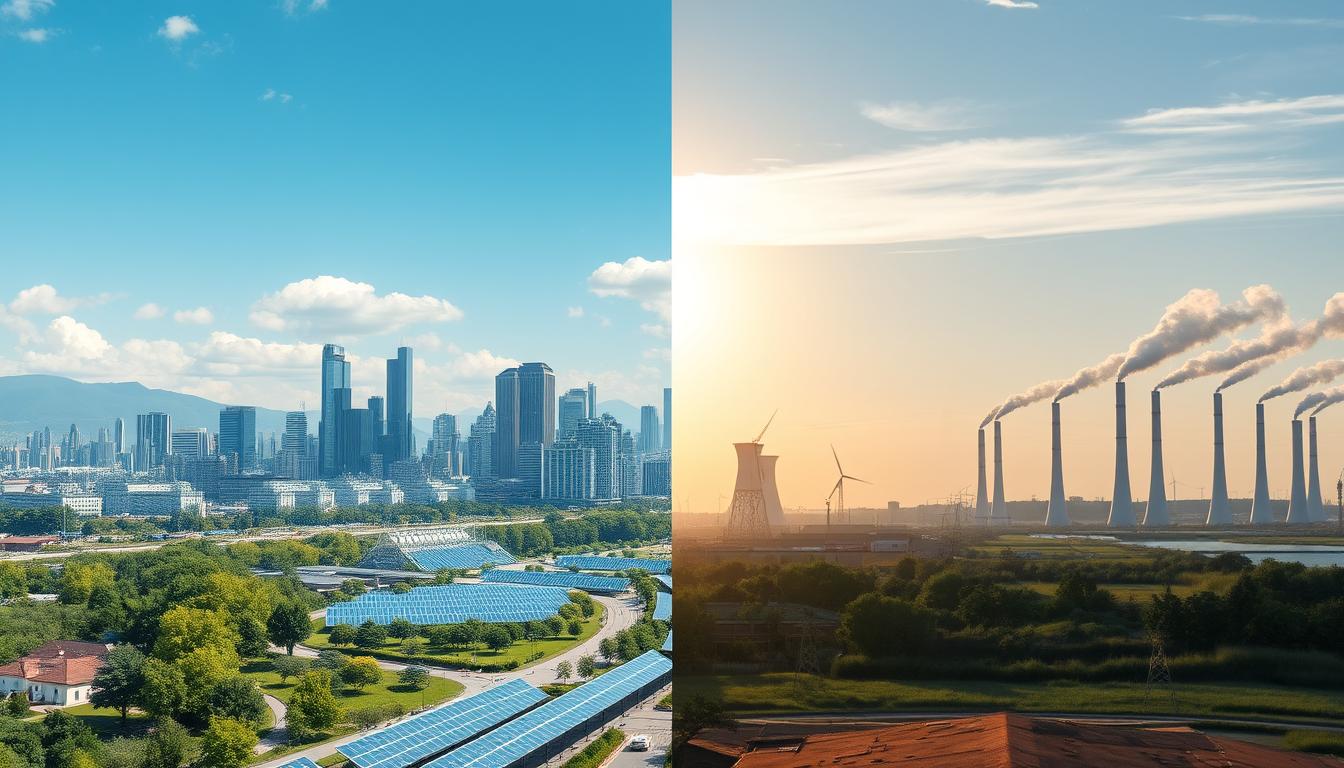I’ve been looking into whether Endeavour Energy is considered CBD or non-CBD. This question takes me into the heart of Endeavour Energy’s operations. I’ll explore the company’s key services and its place in the energy world.
Big changes are coming to the North Camellia area. It’s set to have up to 10,000 homes and 14,500 new jobs by 2041. The Western Sydney Aerotropolis will also see 200,000 new jobs, in fields like tech and logistics.
I want to explain how these changes affect Endeavour Energy. It’s all about understanding the company’s role in meeting the growing needs of this area. Let’s dive into this complex topic together.
Key Takeaways
- Endeavour Energy’s classification as CBD or non-CBD affects its operational strategy.
- Strategic growth initiatives aim to accommodate significant population increases in key areas.
- The company is positioned to support the creation of thousands of new jobs.
- Understanding Endeavour’s service capacity is crucial for future demands.
- Stakeholder engagement has been high-quality and effective in shaping proposals.
- Cost-reflective pricing impacts customer behavior and overall satisfaction.
Introduction to Endeavour Energy
Endeavour Energy is a major electricity network service provider in New South Wales. It serves about 2.7 million people across a wide area. This includes Sydney’s Greater West, the Blue Mountains, and the Illawarra.
By 2029, Endeavour Energy expects to serve 2.8 million customers. This growth highlights its importance in meeting NSW’s energy needs.
Every year, over 20,000 new customers join the network. The network has 189 major substations and more than 33,000 distribution substations. It covers 24,800 square kilometers, essential for powering homes and businesses.
In 2021/22, Endeavour Energy distributed 16,711 GWh of energy. This was for both homes and businesses. This shows the company’s commitment to reliable electricity supply.
Endeavour Energy works closely with customers and follows Australian Energy Regulator (AER) rules. It aims to create a modern energy system that meets community needs and regulatory standards.
Understanding CBD in Energy Context
In the energy sector, knowing about cbd energy suppliers is key. CBD stands for central business district, where energy demand is high. This is because of lots of commercial and industrial activities. This affects how energy is distributed and the prices people pay.
The role of CBD in energy is huge. CBD feeders have to handle more demand, which means higher costs. These costs lead to higher electricity prices for city folks. On the other hand, areas outside the CBD have lower demand and thus cheaper rates.
Getting the CBD classification right is important for fair prices and efficient energy use. Urban areas need special infrastructure to handle the energy load. Meanwhile, non-CBD areas focus on expanding service to more people.
Here’s a table showing the differences between CBD and non-CBD feeders:
| Category | CBD Feeders | Non-CBD Feeders |
|---|---|---|
| Demand Level | High due to commercial activity | Varied, influenced by population |
| Operational Costs | Higher | Lower |
| Electricity Rates | Typically higher | More affordable |
| Infrastructure Requirements | Advanced | Expanding coverage |
| Customer Base | Urban users | Residential and rural users |
As cities grow, energy feeders might change class. Demand and geography can shift, making updates needed. Clear classification helps energy companies serve their customers better.
Non-CBD Energy Companies Explained
Non-CBD energy providers play a key role in supplying electricity to suburban and rural areas. They are different from CBD companies in how they operate and grow. For example, they focus on areas like Riverstone East and Schofields, which will see a lot of new homes in the next 20 years.
The Riverstone area is expected to need a lot of electricity by 2044, about 149MVA. But, the current setup might not be enough. By 2026/27, the demand will likely be more than what’s available, leading to the need for more investment.
These companies aim to solve these problems by making strategic improvements. They look at different ways to meet the growing demand. Two main options show how they plan to do this, focusing on what’s needed and how to invest wisely.
| Option | Proposed Action | Project Capital Expenditure (Capex) | Present Value of Market Benefits | Present Value of Costs | Net Present Value (NPV) |
|---|---|---|---|---|---|
| Option 1 | Establish a new Grantham Farm ZS in 2026/27 and augment Schofields ZS in 2031/32 | $53.8M | $67.5M | $30.8M | $36.7M |
| Option 2 | Augment Schofields ZS in 2026/27 and establish a new Grantham Farm ZS in 2031/32 | $54.1M | $59.3M | $24.9M | $34.4M |
Studies show that Option 1 is the best choice for improving the network. It offers the highest economic benefits. Knowing the differences between CBD and non-CBD companies is important. It helps understand their unique challenges and how they plan to meet growing demands.
Our Operating Environment
The energy landscape is always changing. It’s influenced by rules, what customers want, and new tech. Endeavour Energy serves over 2.5 million people in Sydney’s West and nearby areas. Their network covers almost 25,000 square kilometers, making it a big challenge.
By 2036, Sydney’s West will grow a lot. There will be 725,000 more homes. The government is spending over $10 billion on projects like the Western Sydney Airport. This means Endeavour Energy needs to get better at serving the area’s growing energy needs.

Endeavour Energy wants to make its network more efficient. They plan to use tariffs that reflect the cost of energy. This will encourage people to use energy when it’s cheaper and save for when it’s more expensive.
By 2024, they’ll also make it easier for people to share energy. This will help the environment and save money. It’s all about finding a balance between meeting needs now and planning for the future.
Looking at Endeavour Energy’s challenges, it’s clear they need to keep up with changes. They must follow rules to ensure safety and reliability. This is key for both now and the future.
| Key Factors | Current Situation | Future Projections |
|---|---|---|
| Customer Population | 2.5 million | Projections suggest 1.1 million residents in Western Sydney by 2036 |
| Network Coverage | 25,000 square kilometers | Required infrastructure investment estimated at $100 billion by 2036 |
| Cost-Reflective Tariffs | 8% adoption in 2022 | 71% estimated adoption by 2029 |
| Economic Impacts | $10 billion government investment in infrastructure | 200,000 new jobs projected in Western Sydney |
Overview of Endeavour Energy’s Tariff Structure
Looking at Endeavour Energy’s tariff structure for 2024 to 2029, I see a focus on fair pricing. This method aims to balance revenue with network efficiency and user fairness. It links prices directly to the costs of electricity supply.
This approach supports the use of new technologies like electric cars and solar panels. It helps these technologies fit well into the energy market.
The energy pricing models by Endeavour Energy show a move to more flexible tariffs. By 2029, 71% of customers will be on these tariffs, up from 8% in 2022. Prices will change with the seasons, with higher rates during peak times.
This change encourages users to use less energy during busy hours. It helps the network run better and supports renewable energy use.
Customers can also earn more by exporting energy during peak hours, from 4 PM to 8 PM. This rewards renewable energy use and aligns with network needs. Each tariff class reflects both import and export prices, following cost-reflective principles.
Endeavour Energy plans to spend $1.8822 billion on network upgrades. This investment will help keep energy reliable and meet growing demands. It’s key for following national rules and improving service for customers.
The planned changes in tariffs are a smart move towards a better energy system. There’s been a lot of feedback from stakeholders, showing strong support for these updates. These changes aim to make energy use more efficient and boost customer happiness.
Key Drivers of Endeavour Energy’s Revenue Proposal
Understanding the revenue proposal drivers is key to seeing how Endeavour Energy will handle its finances from 2024 to 2029. With more customers and changing economic times, many factors will shape revenue and pricing.
Overview of Revenue Factors
Let’s dive into the main points of Endeavour Energy’s revenue:
- Customer growth is expected to rise from 1.08 million in 2024 to 1.22 million by 2029.
- Prices for homes and small businesses will likely go up by 9.8% each year.
- Operating costs are forecasted to drop from $1.74 billion to $1.48 billion over five years.
- Capital spending is expected to decrease from $2.04 billion to $1.88 billion.
- Energy supplied will increase from 16.8 GWh in 2024 to 17.7 GWh by 2029.
Impact of Economic Factors
Economic influences on energy revenue are crucial for Endeavour Energy’s financial plans. For example:
- The regulated asset base is expected to decrease from $8.20 billion in 2024 to $7.98 billion by 2029.
- Revenue needs are forecasted to rise from $4.68 billion to $5.14 billion during the same period.
- The population served is expected to grow to 3 million by 2029, increasing demand.
- With 71% of customers moving to cost-reflective tariffs, pricing will change.
Is Endeavour Energy Considered CBD or Non-CBD?
To figure out if Endeavour Energy is a CBD or non-CBD, we need to look at several things. These include the areas it covers, the types of customers it has, and its rules to follow. The endeavour energy cbd evaluation checks these key points to see if it’s a CBD entity.
First, we examine where Endeavour Energy operates. The areas it serves and how many people live there are important. CBD providers usually work in busy cities with lots of people and electricity use. On the other hand, non-CBD companies might serve rural or less crowded places.
Also, knowing who its customers are is crucial. If Endeavour Energy serves both homes and big businesses, it might be seen as a CBD provider. The rules it follows also play a big part. Following certain energy policies can help it be seen as a CBD company.
By looking at these points, we can better understand where Endeavour Energy stands. We’ll consider its market reach, how much energy it uses, and the rules it follows. These are all important for making a final decision about its CBD status.
Evaluating the Regulatory Landscape
The rules for Endeavour Energy shape how it works and what it charges. Looking into energy market rules, I see how following the Australian Energy Regulator (AER) helps Endeavour serve customers well. The rules from July 1, 2024, to June 30, 2029, affect how the company makes money.
Endeavour Energy sent in its money plan on January 31, 2023. The AER’s choice will decide how much money the company can get from customers. This is key for keeping energy services reliable. It’s also cool that customers can send energy up to 2 kW without extra fees, making energy use more flexible.

Regulations change how energy providers work, especially in 2029. For example, more customers will join cost-reflective tariffs, from 8% to 71%. This change helps use energy better. Also, prices for using the network will be higher from 4 PM to 8 PM on weekdays, but lower from 10 AM to 12 PM.
Working with the community is important for Endeavour Energy. They talked to big Battery Energy Storage System (BESS) providers and small generation aggregators (SGA). People seem happy with how they’re doing, showing Endeavour’s commitment to the community.
In short, rules deeply affect Endeavour Energy’s choices and plans. Things like inflation, interest rates, and Renewable Energy Zone (REZ) projects shape its priorities. Knowing about these helps understand Endeavour Energy’s future.
Consumer Engagement Strategies
Engaging consumers is a top goal for Endeavour Energy. The company knows that building strong customer relationships is key. It helps improve customer experience and meets the changing needs of the energy sector.
Endeavour Energy uses many ways to talk to customers. Customers can share their thoughts, ask questions, and get answers easily. The company also listens through surveys and feedback programs. This helps them understand what customers want and improve their services.
Endeavour Energy is changing how it charges for energy. Prices will be lower during the day and higher at night. This change aims to make customers more aware of how they use energy.
By 2029, about 71% of customers will see these changes. Smart meters will help make this shift smoother. They will give customers real-time info on their energy use and costs.
The company also wants to use more renewable energy, like rooftop solar. It plans to reward customers for sending extra energy back to the grid. This move shows Endeavour Energy’s commitment to a greener future.
| Year | Percentage of Customers on Cost-Reflective Tariffs | Energy Demand (Max Demand Reduction) |
|---|---|---|
| 2022 | 8% | – |
| 2029 | 71% | 1% Reduction |
In short, Endeavour Energy is serious about improving how it talks to customers. It listens to feedback and tries new things. This way, the company aims to build stronger relationships and create a better energy future.
Cost-Reflective Tariffs Explained
Understanding cost-reflective tariffs is key in today’s energy world. These tariffs match electricity prices with the real cost of power delivery. This makes the system fairer and more efficient for users. As we move towards a greener and more dynamic energy market, these tariffs are vital. They help encourage smart energy use.
Benefits of Cost-Reflective Pricing
Cost-reflective pricing brings many benefits to consumers. Here are some important points:
- It encourages strategic energy usage by rewarding users for using less power during off-peak hours.
- It helps reduce peak demand, which lowers costs for the whole network.
- It’s expected to cut maximum demand by 1% by 2029, helping all customers.
- It offers lower rates when there’s a lot of solar energy, helping those with solar panels.
Impact on Consumer Behavior
Cost-reflective tariffs change how people use energy. As more people understand tariff changes, they make better energy choices. By 2029, 71% of Endeavour Energy’s customers will be on these tariffs. This change will have big effects:
- It encourages using energy wisely, especially when it’s cheaper.
- It boosts interest in energy-saving tech, like smart meters and apps.
- It might lead to more energy exports during peak hours, where rewards are higher.
| Tariff Type | Peak Pricing (4pm-8pm) | Off-Peak Pricing (10am-12pm) |
|---|---|---|
| Existing Customers | Higher Charges | Lower Prices |
| New and Upgrading Customers | Subject to Export Tariffs | No Charges for exports below 2kW |
Cost-reflective tariffs aim to make energy use more efficient and cheaper for everyone. They show how our energy habits are changing with new pricing structures. This evolution is key to a better energy future.
Comparison of CBD vs Non-CBD Energy Providers
In the world of energy, the choice between CBD and non-CBD providers matters a lot. Knowing the differences helps us pick the right energy supplier. I looked into things like prices, service, and how well they work. This shows how each type meets different customer needs.
Looking at energy companies, we see big differences. CBD providers focus on big energy plants and lines, offering steady power but at a higher cost. They invest in big systems.
Non-CBD providers, however, try new ways like small power plants and cool tech. They tackle energy problems in their own way, offering flexible services. They keep improving and listen to what customers say to stay affordable.
Here’s a table to show the main differences between CBD and non-CBD energy providers:
| Criteria | CBD Providers | Non-CBD Providers |
|---|---|---|
| Operational Structure | Centralized generation | Decentralized generation |
| Service Delivery | Structured and standardized | Flexible and adaptive |
| Pricing | Higher costs due to infrastructure | Competitively priced with innovative solutions |
| Consumer Engagement | Traditional feedback channels | Proactive methodologies for engagement |
Understanding the differences in service delivery helps us choose better. By knowing how CBD and non-CBD providers work, we can pick what fits our energy needs and budget.
Conclusion
Looking back, Endeavour Energy stands out in the energy world. Our study shows how classification affects the company’s work, plans, and how it connects with customers. Understanding this is key for Endeavour Energy to keep up with changes in rules and what people want.
Endeavour Energy is ready to bring new ideas while keeping customers happy and following rules. Being classified as CBD or Non-CBD will shape how it serves its customers. This could make the company more efficient and build trust with its customers.
In the end, I suggest we keep watching how Endeavour Energy grows with the market and what people want. The energy world is always changing. Staying updated helps customers and makes Endeavour Energy a leader ready for the future.

Leave a Reply
You must be logged in to post a comment.